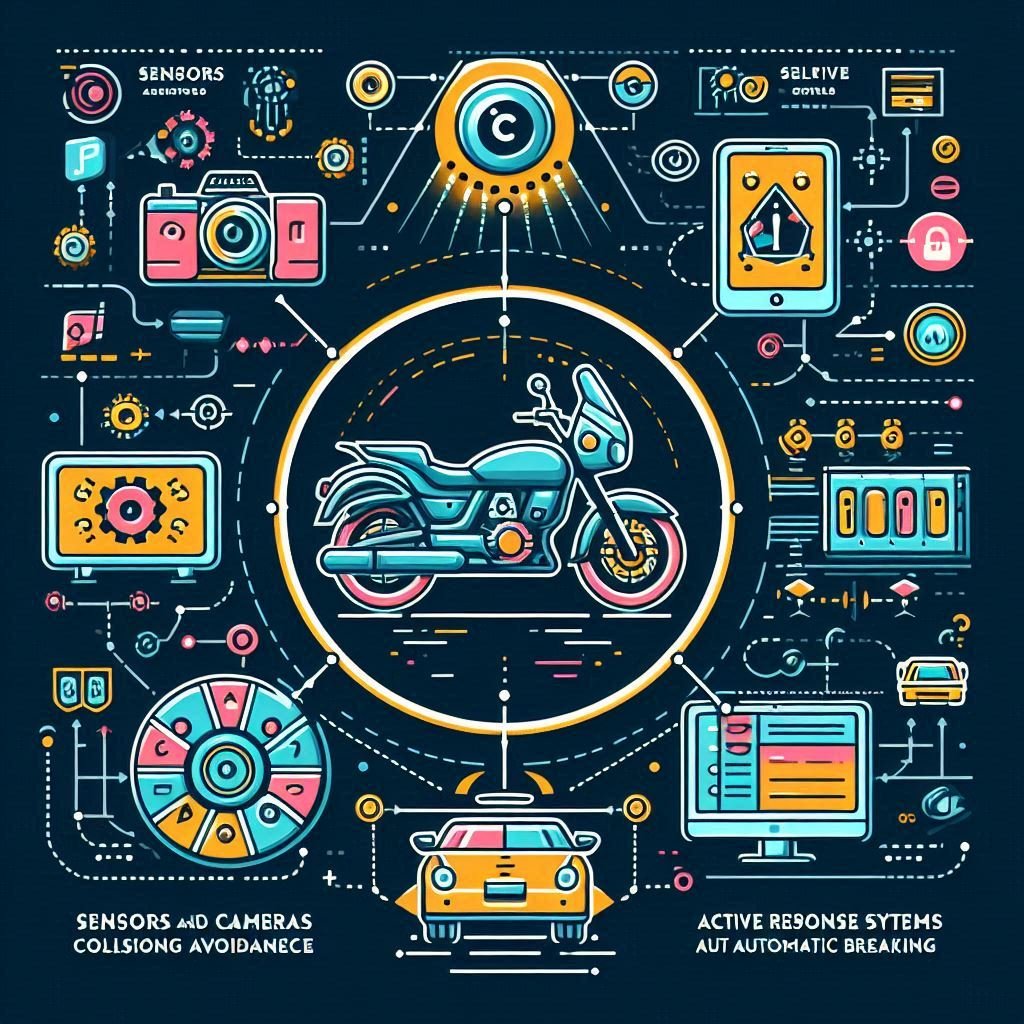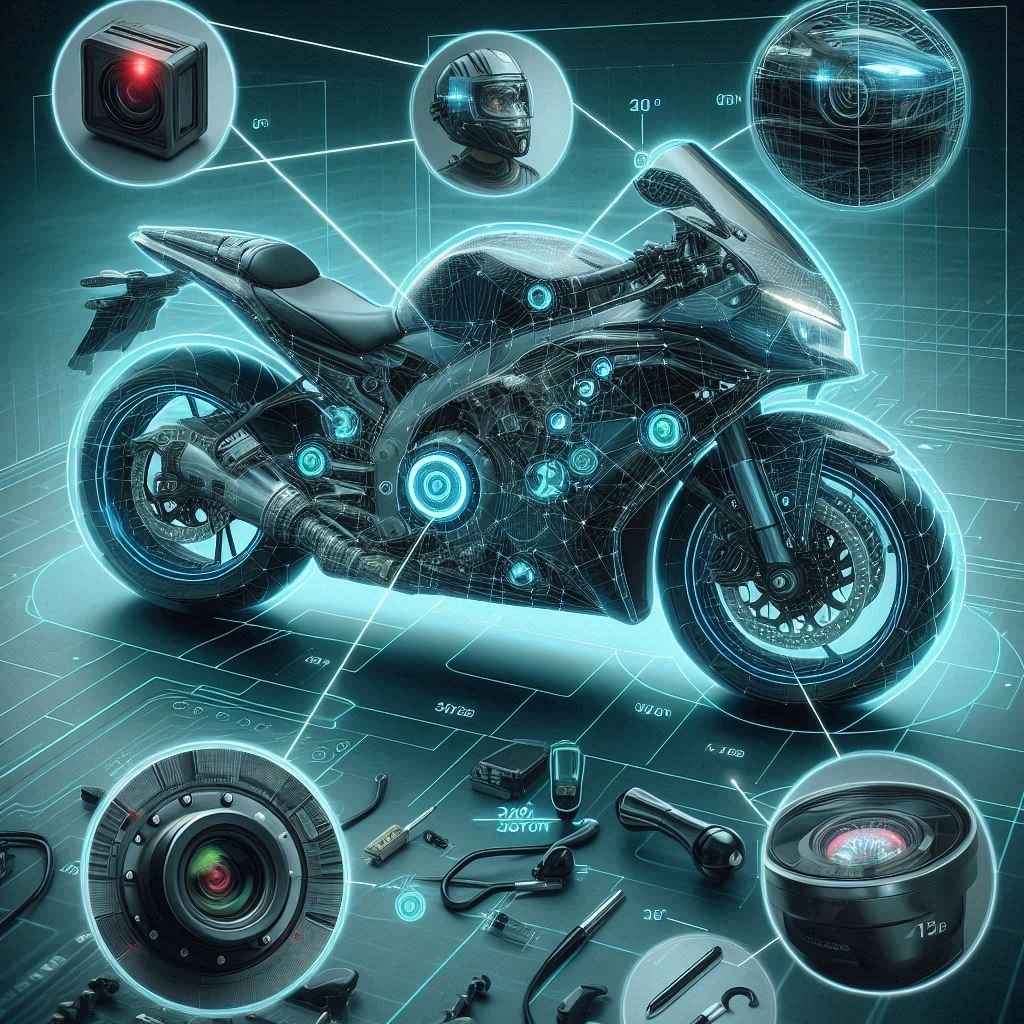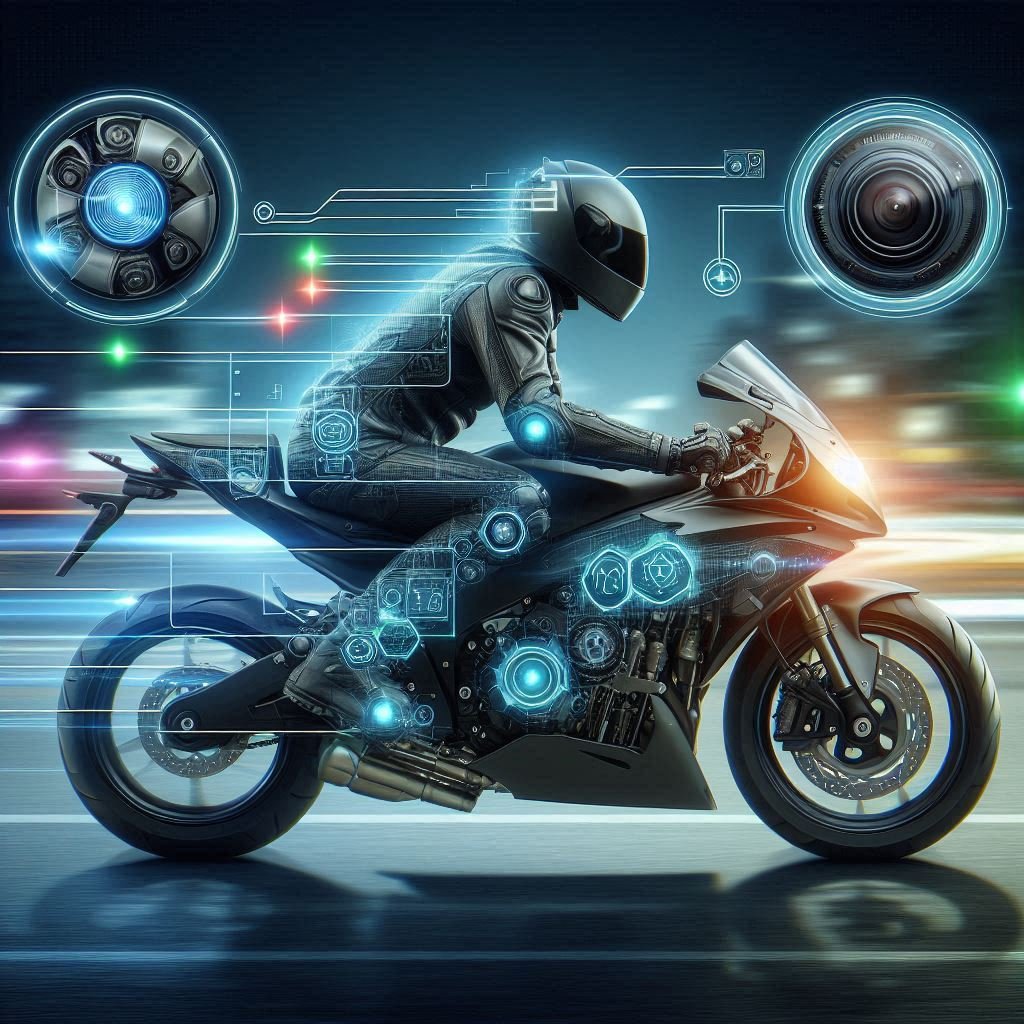Motorcycling is an exhilarating experience, but it comes with significant safety risks, especially Collision Avoidance. As technology advances, artificial intelligence (AI) is playing a pivotal role in making motorcycle safety more reliable and effective. One of the most exciting developments in this space is the rise of AI-powered collision avoidance systems, designed to minimize the chances of accidents by detecting and responding to potential hazards on the road. In this article, we’ll explore how these systems are transforming motorcycle safety and take a look at what the future holds for AI in motorcycling.
What is AI-Powered Collision Avoidance Technology?

At the core of AI-powered collision avoidance systems lies the ability to detect and mitigate risks in real-time, offering riders a safer experience. Here’s how it works:
| Component | Function |
|---|---|
| Sensors and Cameras | Continuously scan the environment for vehicles, pedestrians, and obstacles. |
| AI Algorithms | Process data from sensors to analyze and predict potential threats. |
| Active Response Systems | Take actions such as alerting the rider or initiating automatic braking to avoid a collision. |
Traditional safety systems like anti-lock braking or basic alert mechanisms provide valuable assistance, but AI-powered collision avoidance technology goes beyond that by intelligently assessing the situation and making real-time decisions to help the rider avoid accidents.
The Benefits of AI-Powered Collision Avoidance Systems
The integration of artificial intelligence into motorcycles brings substantial improvements in motorcycle safety. Here are some key advantages:
- Enhanced Rider Awareness
AI systems provide riders with additional eyes on the road, identifying risks that may be missed during a ride. This enhances overall rider awareness and reduces the chances of human error. - Real-Time Threat Detection
Unlike traditional systems that might only issue a warning, AI-powered systems actively monitor the environment. If a vehicle suddenly swerves or a pedestrian steps onto the road, the system can alert the rider or even initiate evasive actions like braking or swerving. - Reduction in Accident Rates
Studies have shown that collision avoidance systems significantly reduce accidents caused by human error, fatigue, or distraction. Real-world applications of this technology have already demonstrated lower accident rates in motorcycles equipped with AI systems.
How AI Collision Avoidance Systems Work: A Closer Look
Understanding the detailed functionality of AI-powered collision avoidance systems reveals why they are such a game-changer in motorcycle safety. Here’s a step-by-step breakdown:
- Sensor Data Collection
The motorcycle is equipped with an array of sensors and cameras that constantly gather data from the surrounding environment, including other vehicles, road conditions, and potential obstacles. - AI Analysis and Decision-Making
The AI system processes the data in real-time, identifying risks and deciding on the best course of action. For example, the system differentiates between a pedestrian entering the roadway and a sudden deceleration of a vehicle ahead. - Rider Alerts and Automatic Interventions
Depending on the situation, the system either alerts the rider to take corrective action or autonomously engages safety mechanisms such as braking or steering adjustments, ensuring that the rider remains in control while receiving crucial assistance.
Real-World Applications of AI Collision Avoidance Systems

The impact of AI collision avoidance systems is already being felt across the motorcycle industry, with several real-world applications making a noticeable difference in motorcycle safety.
- Ride Vision’s 360° Safety System
Ride Vision has developed an innovative system that uses AI-powered cameras to give riders 360-degree awareness of their surroundings. The system alerts riders to vehicles in blind spots and provides real-time information about potential threats. - Bosch’s AI Collaboration with BMW, Ducati, and KTM
Bosch has partnered with major motorcycle manufacturers such as BMW, Ducati, and KTM to implement AI-powered collision avoidance systems. These systems can autonomously reduce speed or apply brakes in emergency situations, significantly reducing the likelihood of accidents.
The Future of AI in Motorcycle Safety: What’s Next?

The future of AI collision avoidance systems is incredibly promising, with continuous advancements expected to take motorcycle safety to the next level. Here’s what we can expect:
- Enhanced Sensor Accuracy
Future motorcycles will be equipped with even more sophisticated sensors, such as LiDAR (Light Detection and Ranging), which provides precise detection of obstacles and road conditions, even in poor visibility. These enhancements will allow AI systems to make more accurate decisions. - Improved AI Algorithms
Machine learning algorithms are evolving rapidly. In the near future, artificial intelligence will be better equipped to predict potential accidents and take proactive measures. These advancements will give riders more time to react, further reducing accident rates. - Integration with V2X Communication
Vehicle-to-Everything (V2X) communication is another exciting development on the horizon. This technology allows motorcycles to communicate with other vehicles, traffic systems, and infrastructure. By sharing real-time data, AI systems will have a more comprehensive understanding of road conditions, which will significantly improve overall safety.
Beyond Collision Avoidance: AI’s Broader Impact on Motorcycles
AI isn’t just improving motorcycle safety through collision avoidance systems; it’s also enhancing the overall riding experience. Here are some other AI-driven innovations transforming the motorcycle industry:
- Adaptive Cruise Control
AI can automatically adjust the motorcycle’s speed to maintain a safe distance from other vehicles, providing a smoother and safer ride, especially in traffic. - Smart Helmets
Future helmets will be equipped with AI-powered heads-up displays (HUDs), voice assistants, and real-time navigation, ensuring riders stay informed without getting distracted. - Dynamic Traction Control
AI will adjust traction settings in real-time based on road conditions, ensuring better grip and stability, particularly in challenging environments like wet or uneven surfaces.
Industry Trends and Predictions
The integration of artificial intelligence into motorcycles is rapidly transforming the industry. Here are some trends and predictions shaping the future of motorcycle safety:
| Trend | Description |
|---|---|
| Increased Adoption of Electric Motorcycles | AI is playing a key role in the development of electric motorcycles, optimizing battery performance and enhancing the overall riding experience. |
| Customization and Personalization | AI will allow motorcycles to learn from the rider’s habits, making each ride more personalized, with adjustments in suspension and power based on rider preferences. |
| Focus on Connectivity | With V2X communication, motorcycles will be more connected than ever, improving traffic flow and overall road safety through a network of connected vehicles. |
Conclusion: The Promising Future of AI in Motorcycle Safety
The integration of artificial intelligence in motorcycles has already revolutionized motorcycle safety, and we’re only scratching the surface of its potential. AI-powered collision avoidance systems are reducing accidents, enhancing rider awareness, and ensuring that the road is safer for everyone. As sensor technologies improve, AI algorithms become more advanced, and connectivity with traffic systems increases, we can expect motorcycle safety to reach unprecedented levels.
For riders, embracing these AI-driven innovations means not only a safer ride but also a smarter, more personalized motorcycling experience. The future of motorcycling has never looked brighter.
Disclaimer:
The content on this blog is for informational purposes only and is not intended as professional advice. We strive for accuracy but cannot guarantee the reliability of all information presented.”
If you find any incorrect information in the blog, please inform us.
“This article reflects the author’s opinions and was created with the assistance of artificial intelligence.”




